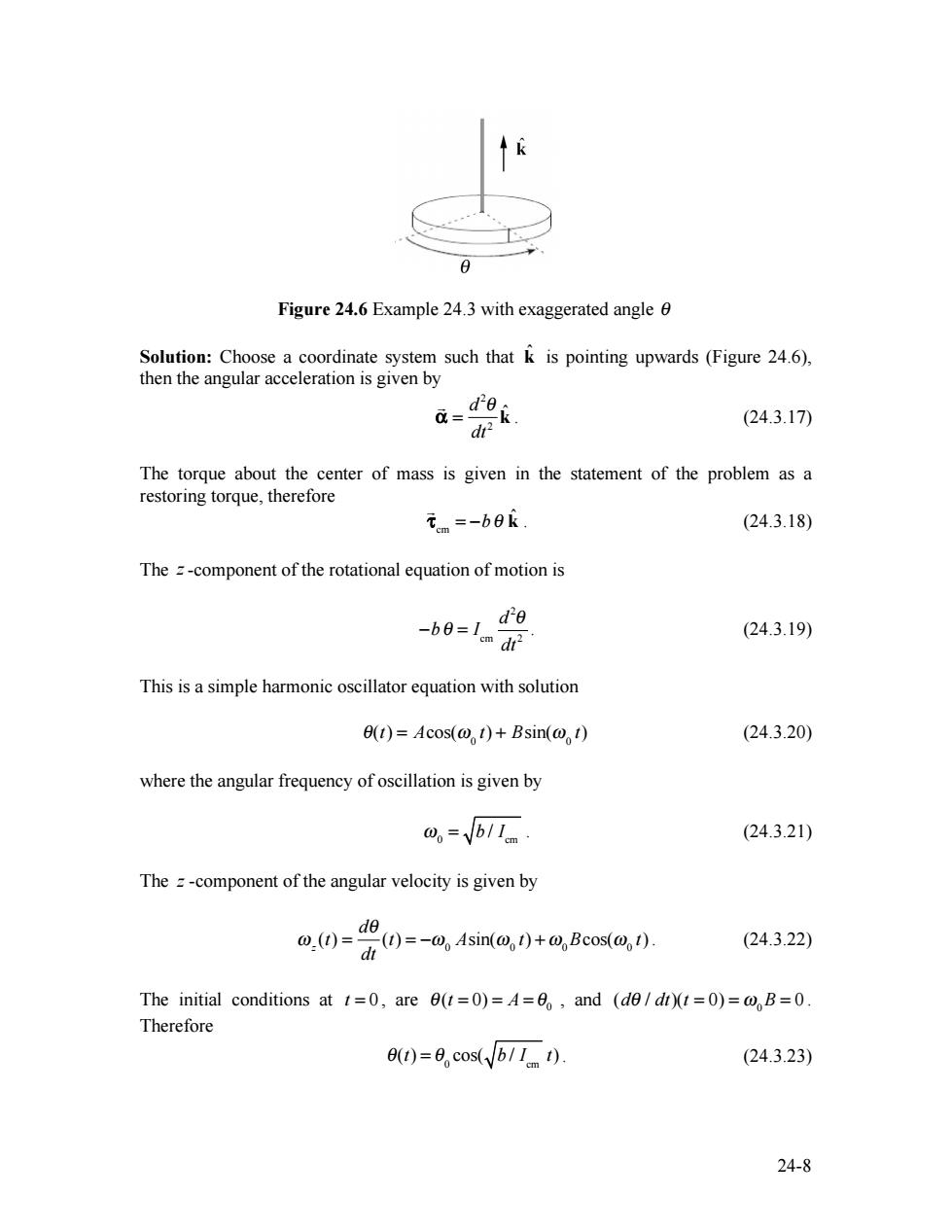正在加载图片...

Figure 24.6 Example 24.3 with exaggerated angle 0 Solution:Choose a coordinate system such that k is pointing upwards(Figure 24.6), then the angular acceleration is given by d d= k (24.3.17) dr The torque about the center of mass is given in the statement of the problem as a restoring torque,therefore 元m=-b0k (24.3.18) The z-component of the rotational equation of motion is -b0-Icm di (24.3.19) This is a simple harmonic oscillator equation with solution e(1)=Acos(@1)+Bsin(@t) (24.3.20) where the angular frequency of oscillation is given by 0。=Vb11m 24.3.21) The z-component of the angular velocity is given by @.)=d ()=-0Asin(0,)+0Bcos(0). (24.3.22) dt The initial conditions at t=0,are (t=0)=A=0,and (de/dr)(t=0)=0B=0. Therefore θ()=0。cos(Vb1Lmt). (24.3.23) 24-824-8 Figure 24.6 Example 24.3 with exaggerated angle θ Solution: Choose a coordinate system such that kˆ is pointing upwards (Figure 24.6), then the angular acceleration is given by α = d2 θ dt 2 kˆ . (24.3.17) The torque about the center of mass is given in the statement of the problem as a restoring torque, therefore τcm = −bθ kˆ . (24.3.18) The z-component of the rotational equation of motion is −bθ = Icm d2 θ dt 2 . (24.3.19) This is a simple harmonic oscillator equation with solution θ(t) = Acos(ω0 t) + Bsin(ω0 t) (24.3.20) where the angular frequency of oscillation is given by ω0 = b / Icm . (24.3.21) The z -component of the angular velocity is given by ω z (t) = dθ dt (t) = −ω0 Asin(ω0 t) +ω0Bcos(ω0 t). (24.3.22) The initial conditions at t = 0 , are 0 θ (t = 0) = A = θ , and (dθ / dt)(t = 0) = ω0B = 0 . Therefore θ(t) = θ0 cos( b / Icm t). (24.3.23)